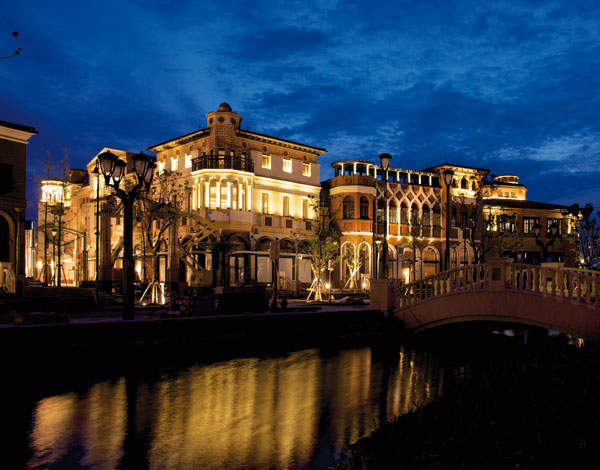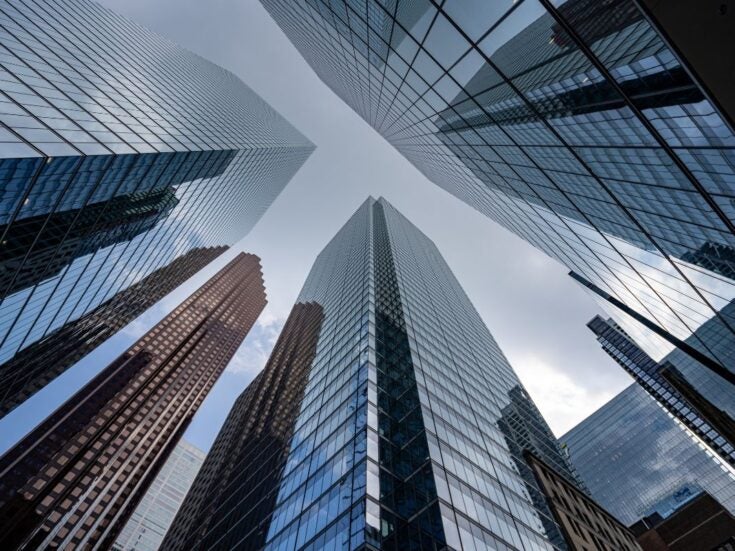

Since my beat is meant to be all about luxury, it may be something of a surprise that this time round I’m having a look at outlet shopping — you know, those places where you go to get cut-price deals. If your only brush with outlet shopping villages has been to pop in to bag a pre-Christmas bargain for your personal trainer or an unloved sister-in-law, you might be surprised to learn quite what staggering business they do today.
In Europe, just over 200 outlet stores are reckoned to have had some €12 billion of sales in 2013, while the 195 outlet malls in the US and Canada did just under $28 billion. And if you’ve never bothered to visit one you’d probably be astonished at quite how sophisticated they have become.
It is some twenty years since Scott Malkin’s Value Retail company came up with what the marketeers like to call a ‘game changer’: a shopping outlet so sophisticated, so like a proper bright and shiny full-price shopping centre, that at first sight its real nature wouldn’t be apparent. He called it Bicester Village.
It had no shoddy rails of bunched-up garments, no dingy cut-price interiors — instead there were fancy window displays, merchandise was beautifully laid out in a clean environment and there were enticing restaurants and coffee shops to keep punters happy. The only way you could tell it was an outlet village was because all the merchandise was at least a year old and all had to be sold at a minimum discount of 30 per cent to full retail price. The result is that today it attracts what Malkin calls a ‘price-insensitive shopper — many of them arrive in expensive cars with chauffeurs on their day trips’.
Malkin’s key perception way back then was that if he wanted to get on board the fancy brands (Prada, Gucci, Anya Hindmarch, Dior and the like) which would bring in high-spending customers, then he would need to give these luxe labels an environment that never, ever damaged their brand images. His other vital observation was that Value Retail wasn’t really about being in the shopping centre or the fashion business at all — it was essentially about providing entertainment, thus his competition was other leisure activities. That is why Value Retail’s nine outlets are all near great tourist cities — Barcelona, Paris and so on.
John Lutzius, a real estate analyst at Green Street Advisors, believes that this has played a key role in Malkin’s success. ‘Scott Malkin has always admired what Marvin Traub did at Bloomingdale’s in New York — which was to turn a staid department store into a dazzling destination — and so he determined to bring that same sense of showmanship to his centres, which is why Bicester, for instance, has among the highest sales per square foot of any retail outlet in the world.’
It’s why Value Retail as a whole has had seventeen years of double-digit growth, with sales across its nine villages running to €1.9 billion. And it’s why today Bicester Village is now a top tourist attraction, with two out of every three Chinese visitors to the UK putting it on their must-visit list.
Given the rise and rise of Chinese economic power, it is extraordinary that while China can boast plenty of run-of-the-mill outlet villages, until now there has been no really upmarket outlet village, something much more like Bicester Village itself. However, all that changed in May, when Value Retail opened a vast development at Suzhou, an enchanting 2,500-year-old city that used to be the cultural centre of China.
The village of 35,000 square metres has around 100 boutiques, of which only about 10-15 per cent sell discounted Chinese brands. The rest of the merchandise on sale is upmarket European and American brands, which is what, frankly, the upwardly mobile Chinese consumer is really looking for. Suzhou itself is a mere couple of hours’ drive from Shanghai, which means that 147 million people are within easy reach of it.
What is interesting is that in order to succeed, to meet what Value Retail perceives to be the growing sophistication of the Chinese consumer, it has decided it has to push the level of service, of luxury, of beauty, of architecture, of entertainment — the whole package — to a higher level than it has managed in any of its other villages.
As Malkin puts it, ‘Nine months ago the Chinese appetite for heavily logoed products shut down almost completely. High-end Chinese consumers know and understand luxury and quality and they want the real thing. They can tell in an instant a “secretary’s bag” (ie a brash logoed number) and they know they don’t want it. They have become more knowing and more sophisticated at a faster rate than I’ve observed in any other emerging market.’
So Value Retail has had to up its game specifically for this rapidly evolving consumer. It has decided that it will tell the story of Suzhou to, in one sense, restore to the people of the area the history of which so much has already been lost.
Suzhou is on China’s Silk Road. Marco Polo stopped there and legend has it that he came upon a mermaid. He dubbed it the ‘Venice of the East’, thus Value Retail’s notion has been to build the sort of village that Marco Polo and his Italian craftsmen might have built had they stayed behind — a sort of China-meets-Venice with a mix of merchants’ houses and some more monumental buildings along the front. They have named the project Yi Ou Lai, which translates as ‘radiance from Europe’, but, says Ruth Ang, Value Retail’s marketing director in China, ‘the name is not just a name — it carries the vision. We want to elevate the art and culture of the region, to help them see Suzhou through a new lens.’
There is, for instance, a traditional Kunshan farmhouse attached to the nearby Fairmont Hotel, where a local cook will conjure up Chinese dishes using seasonal products from the organic farm.
Through the intersection of food and art, culture and what Ang calls a ‘tremendously narrated architectural setting’, Suzhou will give customers a bricks-and-mortar experience to remember. ‘What we’re doing here,’ she goes on, ‘is creating memories. We can’t fight e-commerce — it’s clearly here to stay — so we can only persuade people to come if we give them something extraordinary.’
If you ask Scott Malkin why China, why now, he will tell you that they’re going there because the brands themselves asked them to go there: ‘People such as Armani, Valentino, Gucci, Tod’s all sell directly in China and they all need somewhere safe to dispose of their surplus stock.’
So far Value Retail is the only high-end company in this space eyeing up China. However, Ian McGarrigle, chairman of the World Retail Congress, thinks it won’t be long before other high-end outlet centres arrive in China. Some, such as Jingjin, which Silk Road Holdings opened near Beijing in 2011, have managed to acquire some high-end brands (Prada, Burberry, Coach), but all the evidence is that none has yet matched Value Retail’s attention to detail when it comes to the total environment.
For the moment, then, Value Retail is something of a pioneer in China. Apart from Suzhou itself, later in the year there will be another outlet by the projected Disney Village being built on the outskirts of Shanghai, and Malkin envisages that there will eventually be something like five.
Suzhou has only been in soft launch for a few weeks, but already customers are piling in. It won’t be fully open until the end of September but, given that there is little opportunity for physical recreation in the area — no chance to ski or to surf, no great mountains to hike in — and given, as Malkin puts it so tactfully, ‘recreational time in emerging markets is disproportionately focused on shopping’, the signs are that the millions of visitors projected for the first year are likely to turn up. How do you say ‘half-price cashmere sweaters’ in Mandarin?
LUXURY NOTES: MALE ORDERS
The World Cup may be over, but you can still catch a bit of Brazilian magic for your late summer sun with Frescobol Carioca’s lovely products. It’s a small but cute collection of beach-inspired toys and clothing. New additions include classy tailored swimshorts in patterned quick-dry polyamide (£145) and Italian linen shirts in heavenly shades (£125). frescobolcarioca.com
Autumn’s arrival means the days of cashmere can’t be far away (delighting Nick Foulkes — see page 132). Check out Eric Bompard’s collection for hommes. The Parisian has come up with a capsule collection of proper clothing. His woven sailor jacket or caban homme (£690), inspired by his love of sailing, comes in navy blue or black and is just perfect for casual weekends. Love, too, his blouson jacket in black or navy blue (£560). eric-bompard.com
Begg & Co is a cashmere company which has been based in Ayr since 1866. Its wispy cashmere scarves are ultra-light, made of 100 per cent finest threads from goats from Inner Mongolia. Perfect for travelling or for ‘trans-seasonal’ wear, they come in plains (royal blue, emerald green or khaki, £225), tartans and checks (£235) and patterned (£265). beggandcompany.com, mrporter.com






